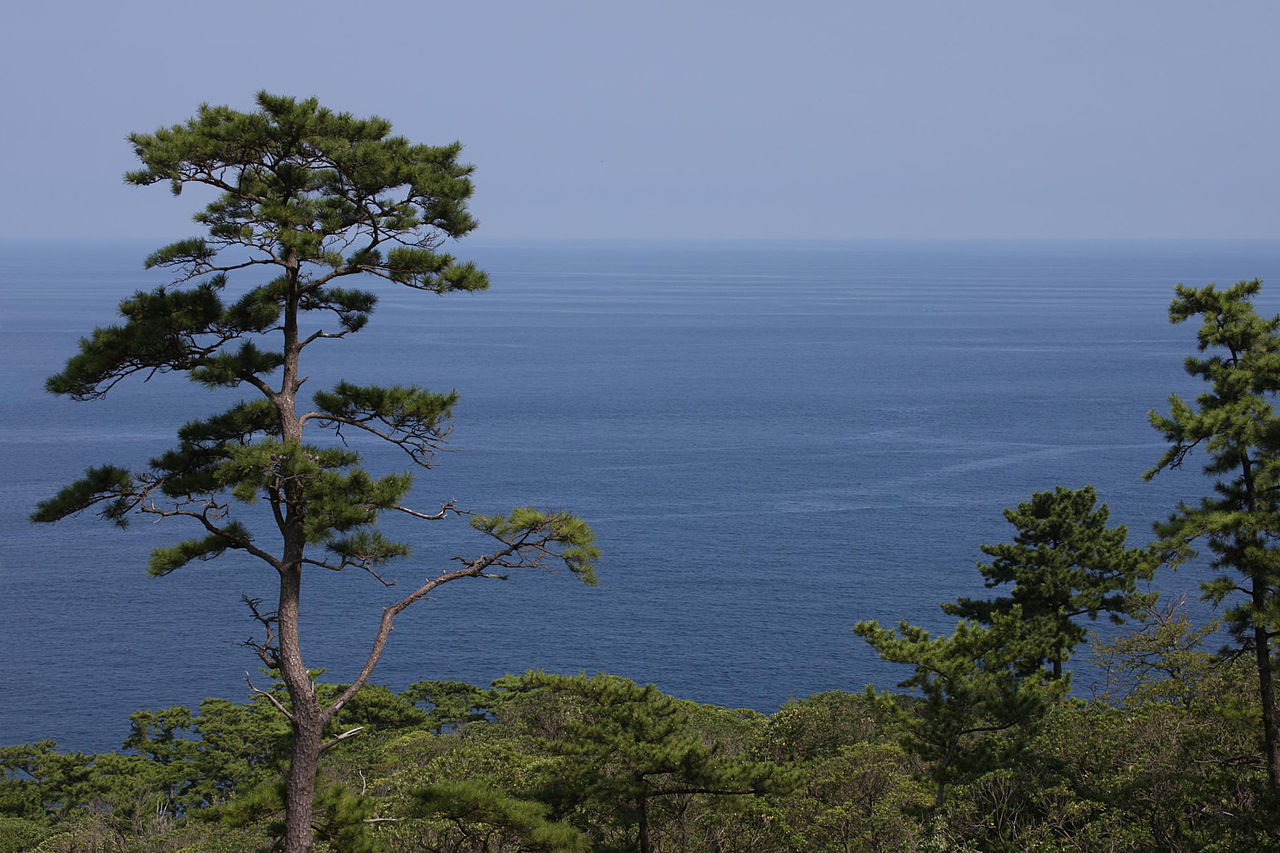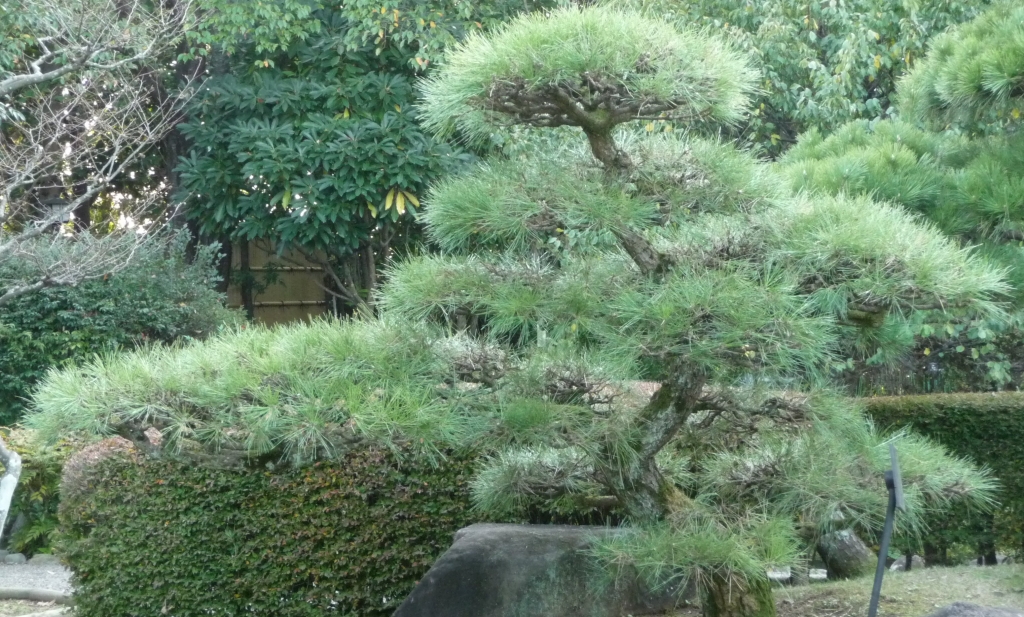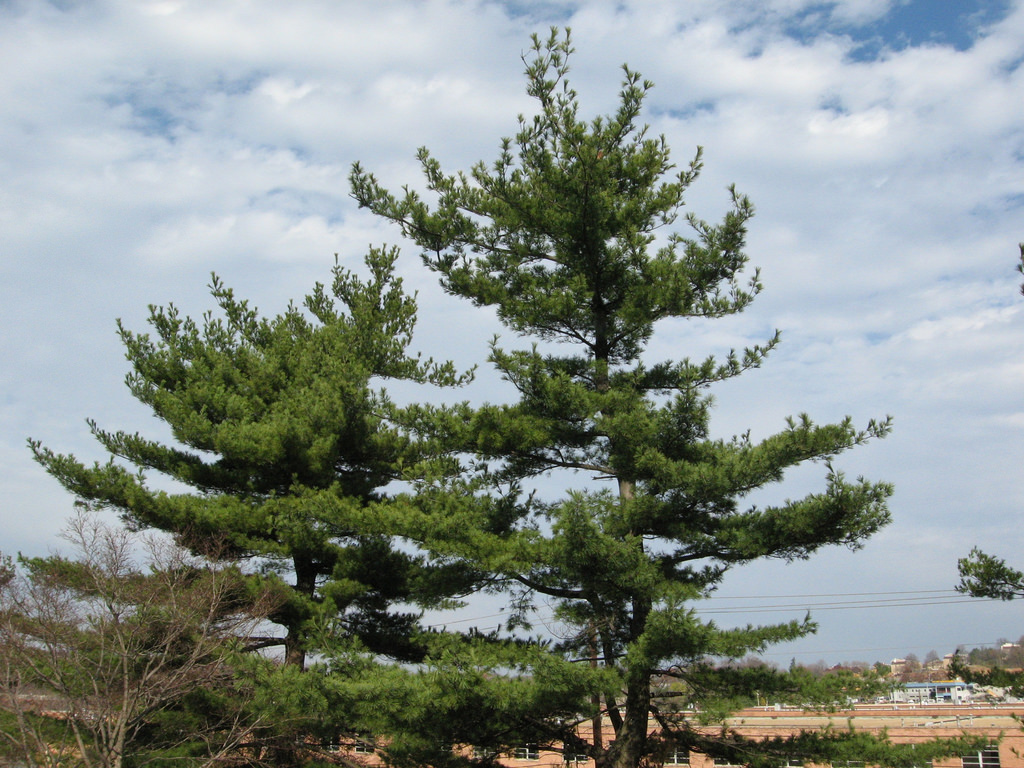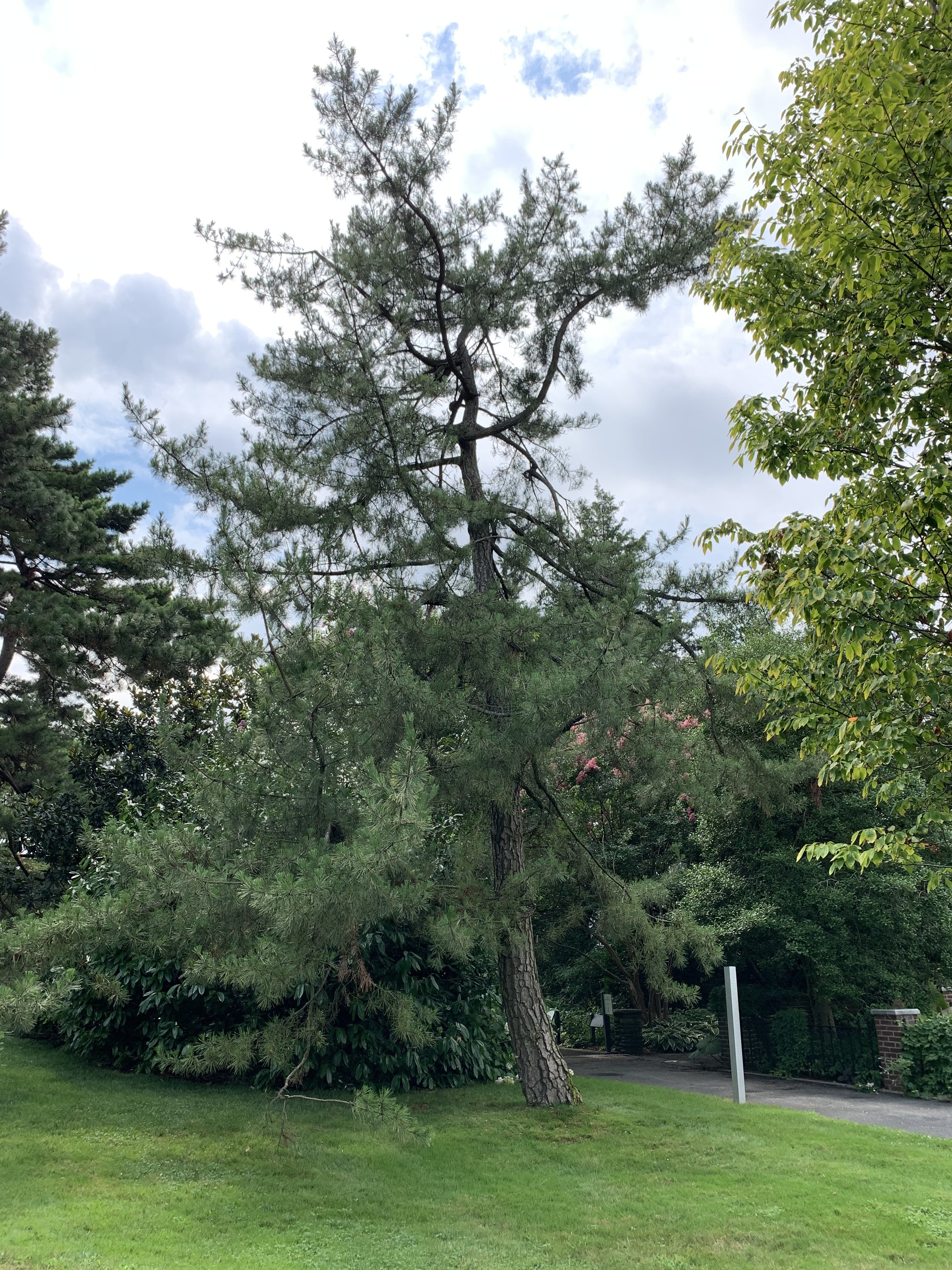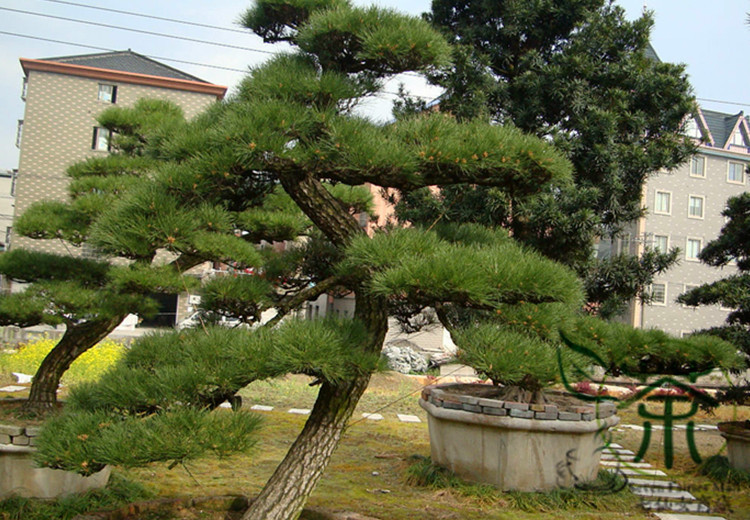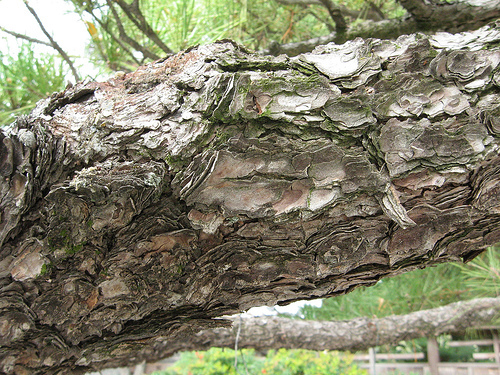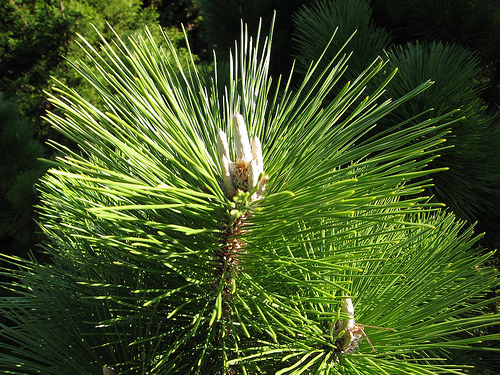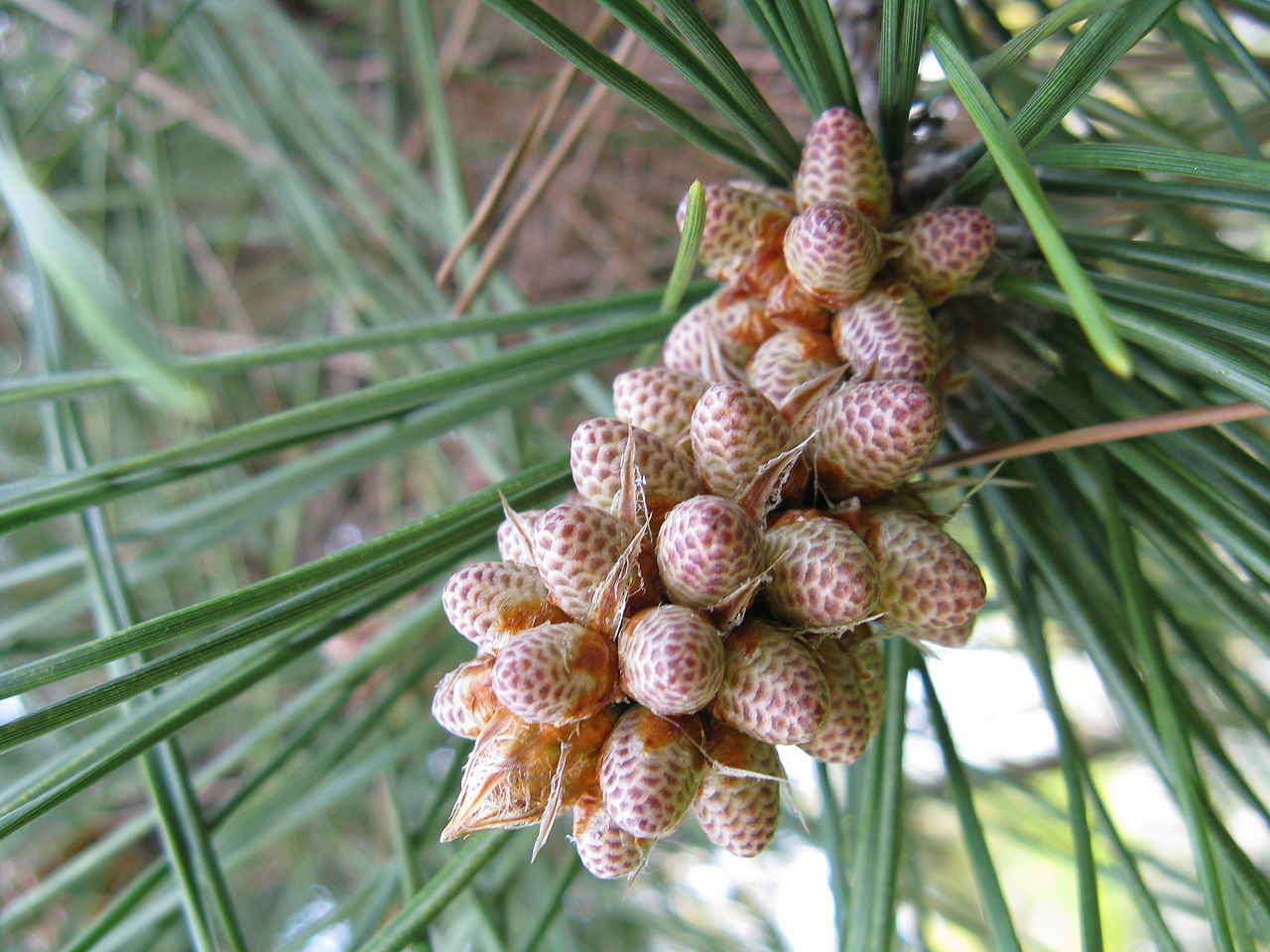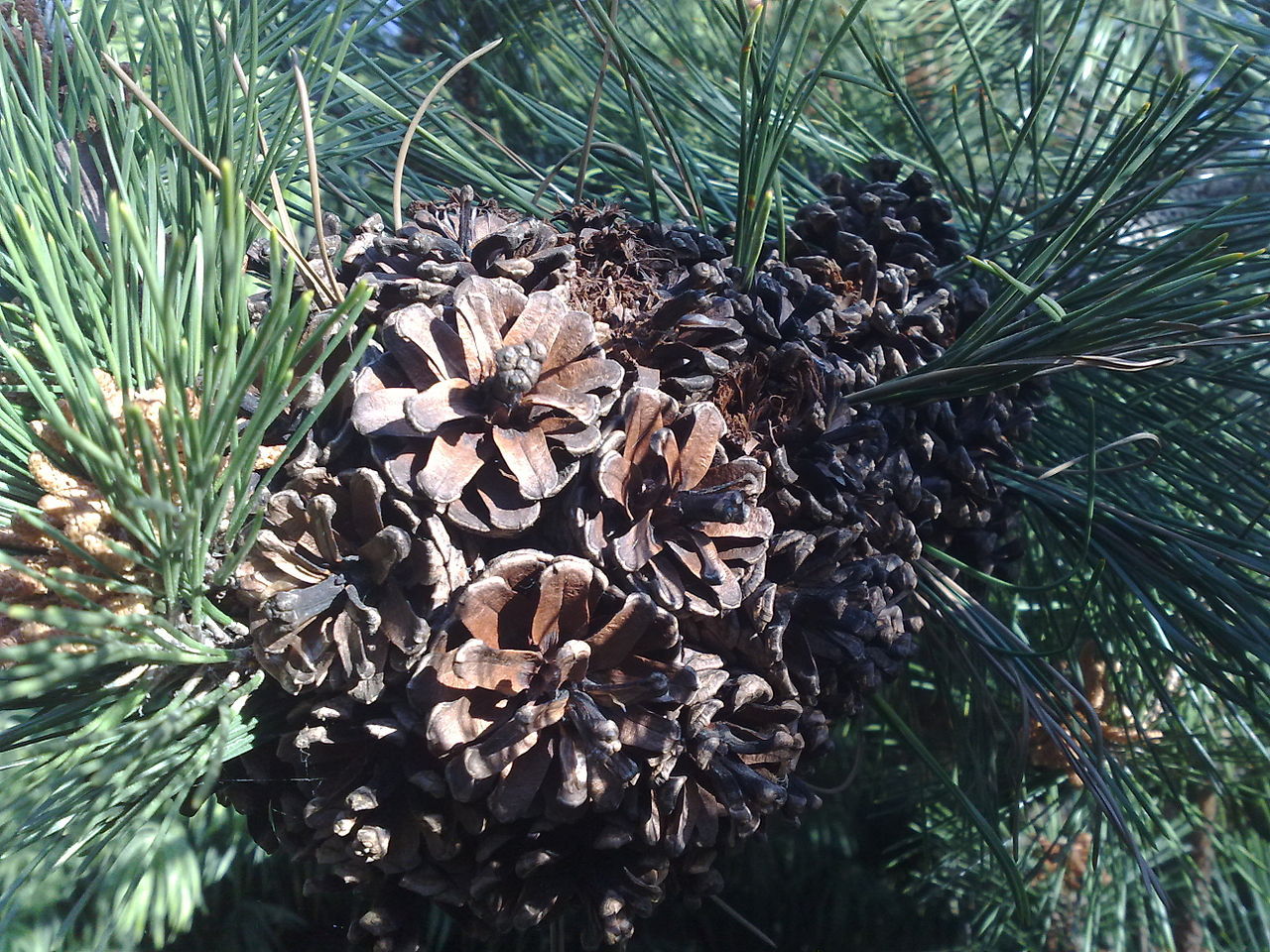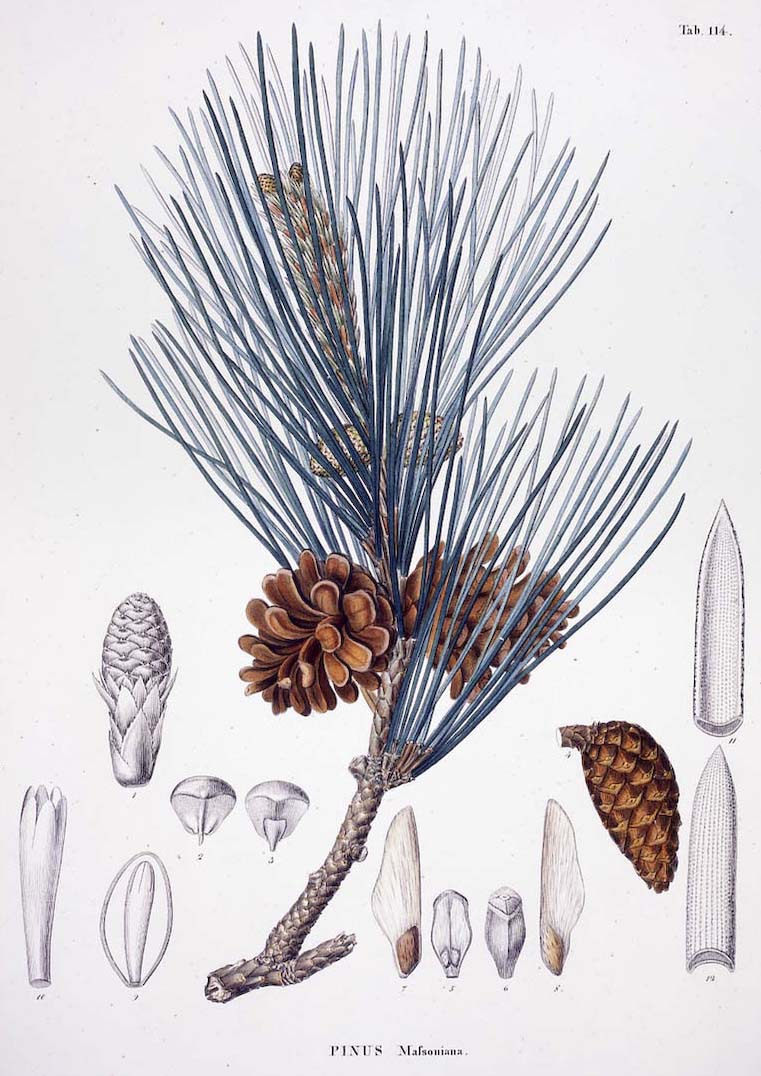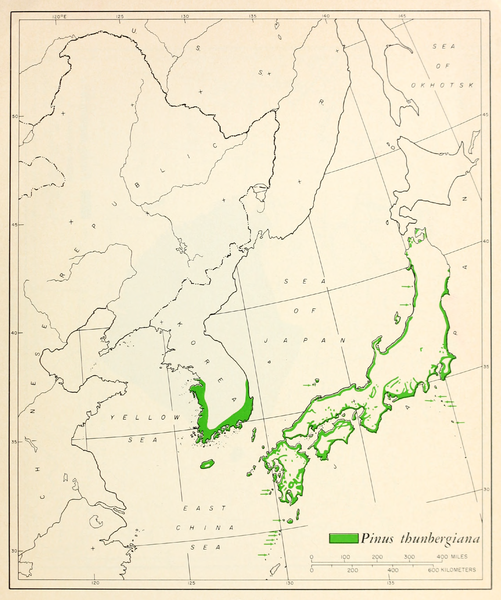subgenus Pinus, section, Pinus, subsection Pinus. This is one of the 'œclassic' old-world, 2-needled, hard pines.

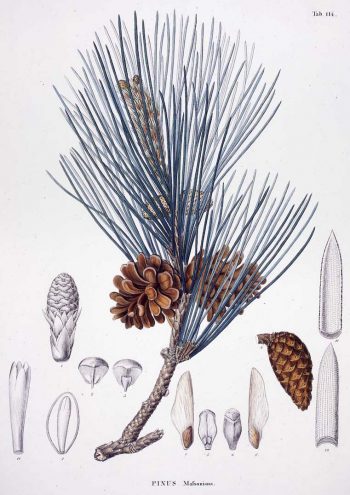
Pinus thunbergii, as described in 1867 by Filippo Parlatore (1816-1877), in Prodromus Systematis Naturalis Regni Vegetabilis 16(2), is commonly known as Japanese black pine; as well as クãƒãƒžãƒ„, é»’æ¾ (kuro-matsu) in the Japanese language,ê³° 솔 (gomsol) in Korean, and (é»‘æ¾ (hÄ“isŠng) in Chinese . The species name honors Pehr Thunberg (1743 - 1835), a Swedish botanist and student of Linnaeus who traveled in Japan and included the species in the first botanical flora of Japan that he wrote, incorrectly referring to it as Scots pine.
Ethnobotany. Historically, this has been one of the most important species used in Japanese architecture. The principal structural woods in most surviving structures of the Muromachi period (14th to 16th centuries) and the Edo period (1603 to 1867) are Pinus densiflora and P. thunbergii, although surviving structures also contain a great deal of Chamaecyparis obtusa.
Today it is widely used as an ornamental, and requisite of Japanese gardens, where it provides structural and symbolic counterpoint to the red pine P. densiflora.
Description. Japanese black pine is an evergreen, coniferous species of tree that grows to mature heights of 125 feet (40 m) tall, with a trunk up to 40 to 80 inches (1 - 2 m) in diameter, measured at breast height, often seen divided in the wide, dense, dome-shaped or flattened crown.
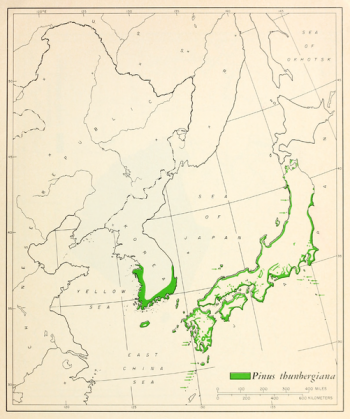
Distribution. This species is native to Japan - Honshu, Shikoku and Kyushu islands; and South Korea. It is the dominant pine from the coast to about 3,300 feet (1,000 m) elevation, where the climate is warm, temperate (with little or no frost) and moist. These regions would have had a predominantly deciduous angiosperm forest cover, with conifers mixed in especially on poor, water-logged soils and on dry slopes and mountain ridges.
Hardy to USDA Zone 6 - cold hardiness limit between -10° and 0°F (-23.2° and -17.8°C).
